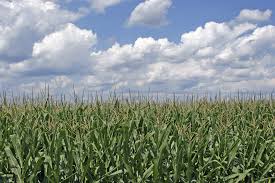We’re often told of the wonders of revolutionary changes that led to our modern world. The industrial revolution, technology revolution, and the agricultural revolution all come to mind. I will admit that there are benefits gleaned from each of these for the average individual. I am sitting in a house built with industrially milled 2×4 pine, factory produced nails, drywall, and metal while typing on a machine more powerful than a million dollar super computer from a couple of decades ago. Tonight I ate a meal prepared from store-bought ingredients that I did not toil to produce. Oh, but there’s the great lie about agriculture!
It might be true that mechanization has increased the productivity and reduced human labor hours within our conventional systems. That’s not the point I am trying to argue against! In fact, I am a huge supporter of using automation to produce food. No, the point of this article is to point out the failings of monocropped agriculture, which has been the model of food production in “civilized” cultures for thousands of years. Agriculture demands that we toil, but it wasn’t always that way.
I would be remiss at this point, if I did not first give credit to the pioneers of the Permaculture movement for the ideas I am about to expose you to. Permaculture is a design science developed by Bill Mollison and David Holmgren. They were heavily influenced by Japanese farmer Masanobu Fukuoka, and I would be equally remiss for not giving Mr Fukuoka a name drop as well. I cannot go into anywhere near enough detail in this post to explain Permaculture, but I will give you some resources. These are all excellent books to begin your study of Permaculture:
- Gaia’s Garden – Toby Hemenway’s masterpiece is the best place to start for those of us in suburbia
- Permaculture One – Mollison’s Magnum Opus. This is a tough read, but great for referencing
- One Straw Revolution – Masanobu Fukuoka’s wonderful work on systems design
So, back to our original topic, what’s so bad about agriculture? To answer that question, we need to go back to basic biology. I mean REALLY basic. I’m talking about the stuff you learned in third grade and kind of forgot about because your Prussian model education was all about passing a test. If you will recall, natural systems rely on interdependence to maintain balance. When there is a lack of one element to the system, something will rush in to fill the niche. Ask my southern grandmother about the importation of the kudzu plant, and you will hear the closest thing to a profanity laced tirade to ever come from her. The kudzu invasion of our roadsides and meadows is a perfect example of nature filling a void.
When we plow and sow one species we create a void. By design, the world we live in has evolved to fill that void with what we refer to as “weeds”. These weeds are actually serving a function to prevent soil erosion by covering bare soil. Instead of understanding this function and adapting it to meet our goals, we endlessly toil against the weeds. This has led to the adoption of potentially carcinogenic sprays to kill weeds and petrochemical fertilizers used to restore an NPK ratio to soils that have eroded away because of a lack of weeds! You don’t have to be a Persian messenger to see that this is MADNESS!
If we look further at the problems of agriculture, we see that we are not making the full use of the sun’s energy. Have you ever walked through a dense forest at midday? There’s not very much light getting through there, right? Contrast that to a corn field where there is only about 3-7 feet of photosynthesis going on towards the end of the season.

After the corn is harvested, the soil is getting baked by the sun and all that energy is just going to waste. So, we know that agriculture is not so revolutionary when we understand the design science of Permaculture.
When you design a forest garden based on the principles of Permaculture, you exert a lot of effort up front. After that initial install, the system balances and you are left with a low maintenance system that utilizes more of the sun’s energy without the need for outside resources. This is the exact opposite of toiling every year to produce a bushel of corn.
So now you know what the real revolutionary system is when it comes to food production. What we don’t know yet is how this all ties into rewilding. I will explain that in part II of this post where we study the origins of Permaculture a bit more. Here’s a preview: Permaculture techniques are mostly just adapting ancient methods to new technologies. Our “primitive” ancestors understood how to stack functions and design an ecosystem to suit their needs. Permaculture is one of the ways we are relearning what it is to be human, and REWILDING OURSELVES!

2 thoughts on “Agriculture: Not so revolutionary”